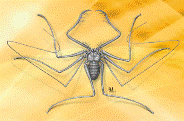Papers in the Biological Sciences

Eileen Hebets Publications
Document Type
Article
Date of this Version
2017
Citation
Mammola et al. (2017), Record breaking achievements by spiders and the scientists who study them. PeerJ 5: e3972; DOI 10.7717/peerj.3972
Abstract
Organismal biology has been steadily losing fashion in both formal education and scientific research. Simultaneous with this is an observable decrease in the connection between humans, their environment, and the organisms with which they share the planet. Nonetheless, we propose that organismal biology can facilitate scientific observation, discovery, research, and engagement, especially when the organisms of focus are ubiquitous and charismatic animals such as spiders. Despite being often feared, spiders are mysterious and intriguing, offering a useful foundation for the effective teaching and learning of scientific concepts and processes. In order to provide an entryway for teachers and students—as well as scientists themselves—into the biology of spiders, we compiled a list of 99 record breaking achievements by spiders (the “Spider World Records”). We chose a worldrecord style format, as this is known to be an effective way to intrigue readers of all ages. We highlighted, for example, the largest and smallest spiders, the largest prey eaten, the fastest runners, the highest fliers, the species with the longest sperm, the most venomous species, and many more. We hope that our compilation will inspire science educators to embrace the biology of spiders as a resource that engages students in science learning. By making these achievements accessible to nonarachnologists and arachnologists alike, we suggest that they could be used: (i) by educators to draw in students for science education, (ii) to highlight gaps in current organismal knowledge, and (iii) to suggest novel avenues for future research efforts. Our contribution is not meant to be comprehensive, but aims to raise public awareness on spiders, while also providing an initial database of their record breaking achievements.
Included in
Animal Sciences Commons, Behavior and Ethology Commons, Biology Commons, Entomology Commons, Genetics and Genomics Commons


Comments
Distributed under Creative Commons CC-BY 4.0